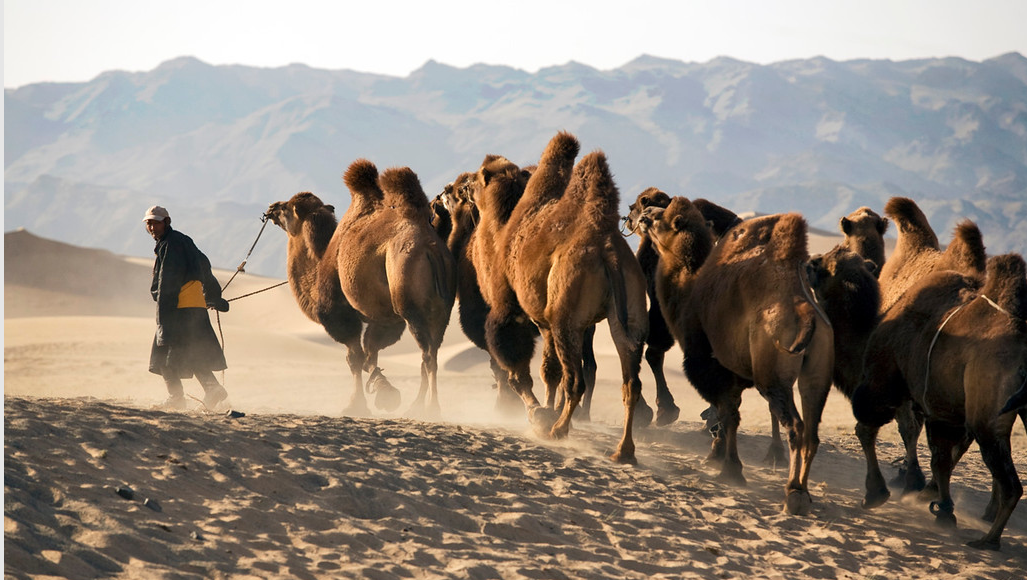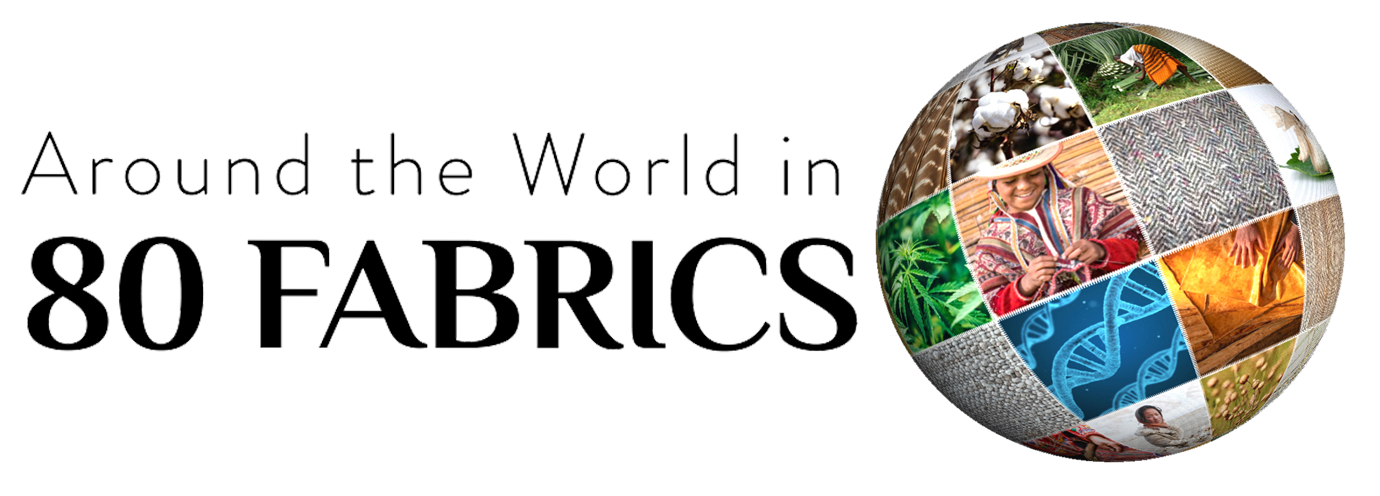
FABRIC: CAMEL HAIR
Regions: Mongolia
Fabric Name:
Camel hair (aka camel wool or camel cashmere)
Origin:
Camelus bactrianus, Bactrian Camel
Who made our fabric:
Togmidshiirev Enkhbold and Munguntsetseg Lkhagvasuren, Ulaanbaatar, Mongolia
This fabric is a part of the Quilt of 5 Jewels
Natural history and ecology:
Bactrian Camels are more than just pretty faces: they are extraordinarily well-adapted to the extreme conditions found in Mongolia. Their double humps act as fat reserves for energy, they can carry huge loads over long distances, withstand the searing heat and frigid cold, and can go without food or water for weeks.
Even more importantly, they have become a source of cashmere. Camel wool is widely considered to be one of the most environmentally sustainable animal fibers. Like cashmere goats, Bactrian camels naturally shed their soft undercoat fibers every year. Camel's hair is rarely dyed, and when it is, producers tend to prefer natural dyes.
What makes this so special: While other types of wool animals may be mistreated during the fiber harvesting process, the chances of animal cruelty occurring during camel wool harvesting are more limited. The Bactrian camel is one of the only sources of wool in the world that naturally sheds its hair every year. Because of this, it is hardly ever necessary or economically expedient to restrain these animals and shear the entire camel.
In terms of sustainability in the actual manufacturing of the fabric, no caustic or toxic chemicals are used during the harvesting or processing of camel wool. Camel wool is an entirely biodegradable substance, which means it does not contribute to pollution when it is eventually discarded.
More than just a pretty face: the gorgeous two-humped Bactrian camels of Mongolia.
Every year, herders from across Mongolia’s Gobi Desert gather for the Thousand Camel Festival, a beautiful two-day festival celebrating the Bactrian camel.
A camel beauty pageant kicks off the festival, and herders sell traditional goods like fermented milk and camel toys stitched from felt (pictured). There are also sporting events like a camel polo tournament and a camel race. The festival actually broke a Guinness World Record in 2016 for the largest camel race when over 1,100 camels crossed the finish line!
-All photos courtesy of Thomas Kelly

“We are trying to send this message to remind people of the life that is close to nature. We feel more connected with our surroundings in the vastness of Mongolia. We feel like we are kind of sending this message to others but not in a preaching way, just reminding people. Gently.”
— Togmidshiirev Enkhbold and Munguntsetseg Lkhagvasuren/Camel Hair
Quilt of 5 Jewels, Mongolia
Togmidshiirev Enkhbold and Munguntsetseg Lkhagvasuren
Created by talented Mongolian Artists husband and wife, Togmidshiirev Enkhbold and Munguntsetseg Lkhagvasuren, this gorgeous textile art piece is a celebration of Mongolia’s non-petroleum textile alternatives. Togmidshiirev Enkhbold is a prominent urban-based artist whose work addresses contemporary Mongolian issues like mining and pollution. His large-scale canvases are created using dung, felt, shrubs, ash, rust, animal skin, and tripe. His wife, artist Munguntstetseg Lkhagwasuren, works in many forms of media including horse hair fiber sculpture. These two artists journeyed across the expansive Mongolian landscape, from the yak herds of the Khangai mountains to the Bactrian camels of the vast Gobi Desert. Along the way, they gathered materials from what is known as Mongolia’s 5 Fiber Jewels -- the sheep, yak, camel, goat, and horses—and created this one-of-a-kind precious biodegradable felt quilt. During their journey, the artists gained deep insight into the ecological relationship between the herders, their animals, and felt-making. Recognized as a UNESCO Intangible Cultural Heritage, this 3000-year-old tradition remains a living art. Enkbold and Munguntsetseg met with nomadic herdsmen and shared discussions about petroleum fiber pollution, the health of the land, and the ecological symbioses that keep them alive in such extreme temperatures ranging from -45F to 112F. The reverence for these animals and the age-old textile tradition of feltmaking is beautifully shared in this Mongolian poem.
“May the felt be stronger than bone
And whiter than fresh snow
May the shears be sharp
May the fleece be fluffy or
May the shears be sharp
May the sheared sheep
Be tens or hundreds of thousands
May the dust from these sheep
Rise up to the sky”





